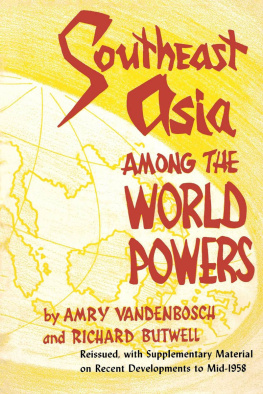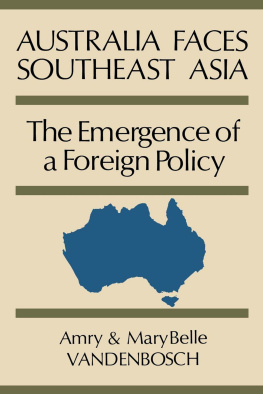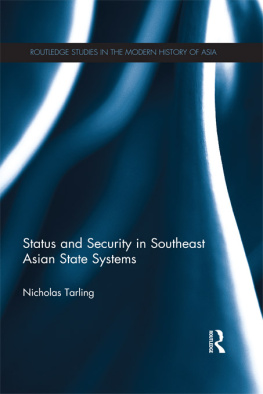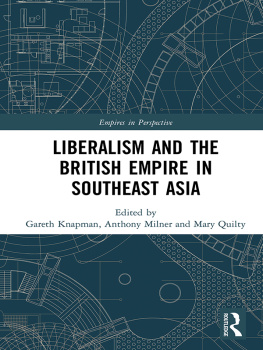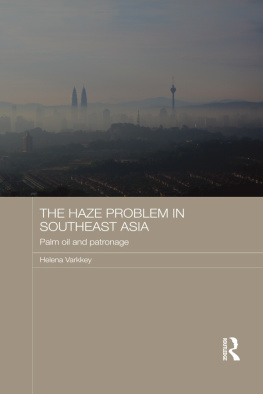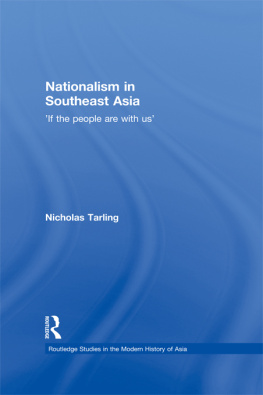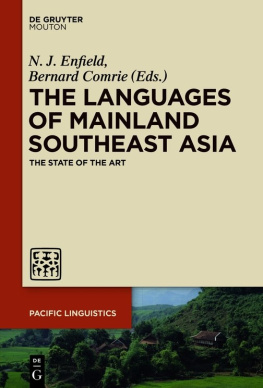PREFACE
TEN YEARS AGO the present authors surveyed the scene in Southeast Asia in the wake of the 1954 Geneva Conference on Indochina and on the eve of Britains grant of independence to Malaya, the last remaining major European colonial holding in the area. They sought to explain the previous decade of political development in Southeast Asia, the most momentous to date in the regions history. Despite the establishment of a Communist state in North Vietnam as an aspect of the 1954 Geneva settlement, the prospects for the growth and survival of several democratic states in Southeast Asia seemed fairly bright a decade ago. Externally, Southeast Asia was moving toward a position of greater importance in international relations, but mans hopes for peace did not then seem to hang in the balance because of any war taking place at the time in the area.
Ten years later the situation had changed dramaticallyor so it seemed. Autocracy was the general type of political system to be found in the area, and Southeast Asia was, at long last, at the very center of world political attention. The state of world peaceor warcould clearly be influenced by what happened in the countries to Chinas south and east of India.
When the authors sought to revise their earlier work, Southeast Asia among the World Powers, they soon found themselves writing a new book. That book is the present volume, which includes modest excerpts from their 1957 work in its historical sections but is otherwise an altogether new survey.
The need for such a new look at Southeast Asia requires little justification. It is as self-evident as the events of recent years are frightening in the ways in which they seem to threaten the peace not only of Southeast Asia but also of an already more than moderately troubled world. Few, however, fully anticipated ten years ago the developments of the last decade. But, if these events were not wholly predicted, they must still be explained in order that we may better understand where we are and the direction in which we are moving.
The United States in mid-1966 was seeking both to check the Communists militarily in South Vietnam and to negotiate the earliest possible honorable settlement with its adversary. The war in Vietnam seemed to have become almost overnight the most important foreign policy problem the United States had faced since the end of the Second World War. It was a problem for Americanot only because it threatened and therefore tested the global leadership of the United Statesbut also because it could lead to a major war with Communist China and, no less equally important, could have most serious consequences for the rest of increasingly interrelated Southeast Asia. The nations that lay beyond Vietnam in different directionsLaos, Cambodia, Thailand, Burma, the Philippines, Malaysia and Indonesiastood variously prepared for the possible fall of Vietnam as for other major challenges of the youth of their independence.
This volume seeks to survey the present state of these nations, being concerned not only with their internal and international politics as such but, most importantly, with the relationship between the two. The political development of these nations is surveyed in separate chapters, and these are followed by examination of the international relations of the region and American foreign policy toward the area.
Some of the material in these chapters is new, reflecting the research interests of the two authors. Other material is drawn from the rapidly increasing body of literature dealing with the politics and policies of the Southeast Asian countries, and acknowledgment is made here of the influence of such literature upon the writing of this book. One or the other of the authors, in addition, has visited all of the Southeast Asian countries except North Vietnamin some cases several timessince their initial collaborative effort appeared in 1957. They hope that such greater personal familiarity with the areaand timehave additionally equipped them for the task they have assumed for a second timelargely because of their affection for the peoples of Southeast Asia and their concern for their future development and Americas relations with them.
Amry Vandenbosch
Richard Butwell
University of Kentucky
Lexington, Kentucky
CHAPTER 1
SOUTHEAST ASIA
Politics of a New Era
MODERN POLITICAL SYSTEMS are the primary means for attempting to solve problems of a public character, with the control of government the chief goal of the competitors for power. The purpose of this pursuit of power is influence over such policies as are formulated by government and subsequently administered by various of its agencies. Those interests which seek to influence public decision-making and policy execution in areas of their concern hope either to obtain or increase advantages for themselves or to prevent undesirable action.
At least two such types of political systems exist side by side in contemporary Southeast Asia. One of these systems embraces all of Southeast Asia. This is by no means a centralized system after the fashion of the more integrated nation-states, but then neither is that of the world as a wholewhich few would deny is today an increasingly interdependent political system, the diversity of its constituent parts notwithstanding. A political system Southeast Asia also surely is, with highly developed competing national (and other) interests striving to influence decisions of importance to the whole area, such as the regions commitment (or noncommitment) in worldwide political controversies and the extent of state economic activity in the area at large.
Each of the Southeast Asian lands has at the same time its own national political systemsome of these, most conspicuously Laos, far from fully integrated. In Vietnams case, there are both North and South political systems of clearly distinguishable character as well as the larger Vietnamese political system within which the Communist and non-Communist portions of the divided and wartorn country interact. The difficulties attending a decision on Laotian neutralization in 1961-1962 clearly attest to the frequent autonomy of such national political processes. The great powers, including both the United States and Communist China, had reached a meeting of the political minds, however unpalatable to various of them in different ways. But for more than a year the world waited for the Laotians to reach comparable agreement among themselves. There may not be a real Laotian nation in fact, but there is a Laotian political process identical with the geographical extent of the so-called nation of Laos.
The countries of Southeast Asia, collectively forming a political system, are distinguished by several common characteristics. They are certainly subject to some of the same influences, and there are, of course, rules of the game, which, though rarely articulated as such, are fairly widely understood (even as they are undergoing change). On the other hand, it should be noted that some extremely important political events within particular countries have failed to influence in any apparent respect the way in which neighboring countries behavedfor example, Burmas army coup of 1962. Singapores race riots of mid-1964, however, clearly encouraged Indonesian boldness in pursuit of the policy of confrontationeven to the point of apparent encouragement by the Djakarta government of a second outbreak between Malays and Chinese after the first seemingly spontaneous clashes.




